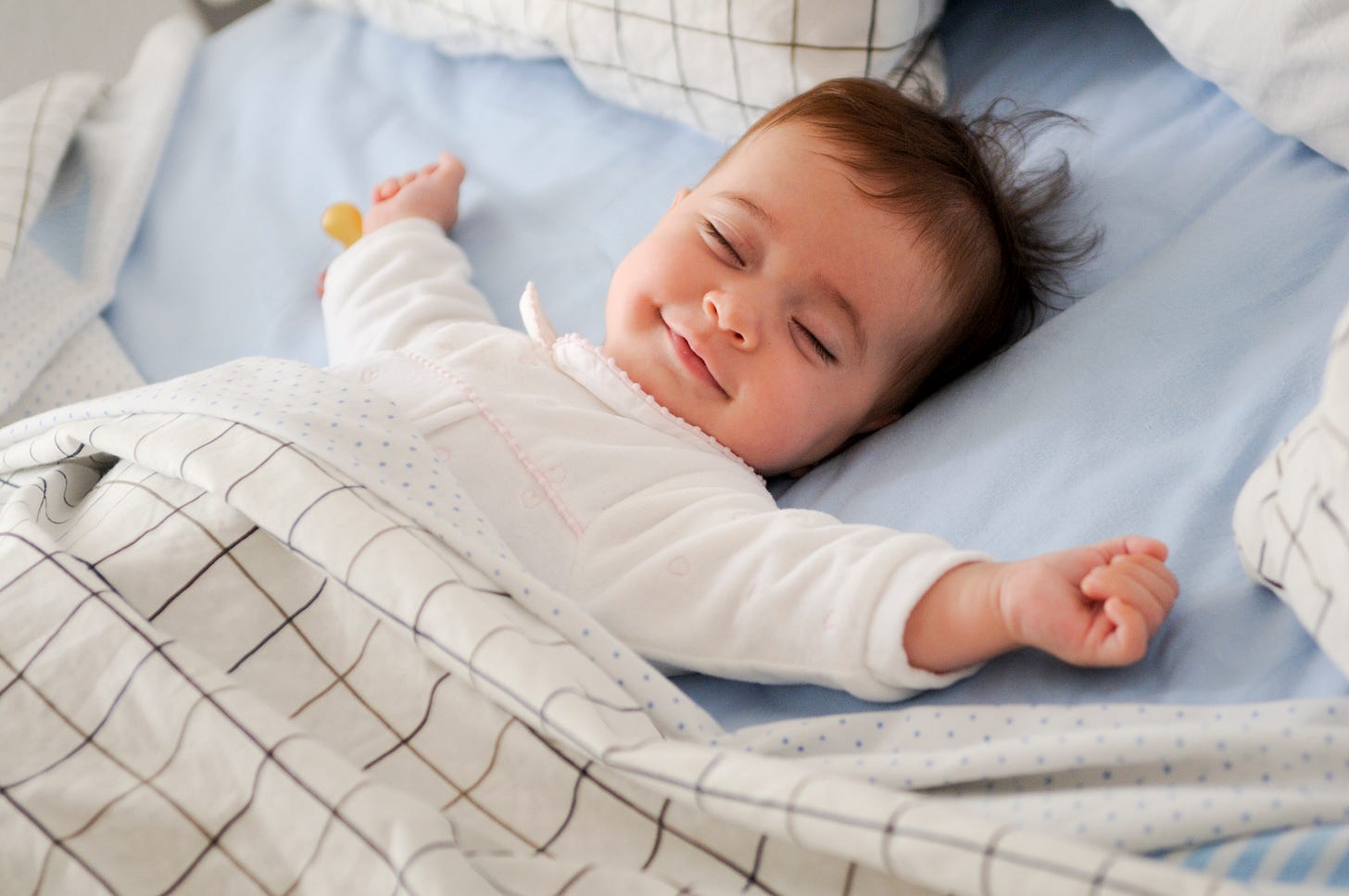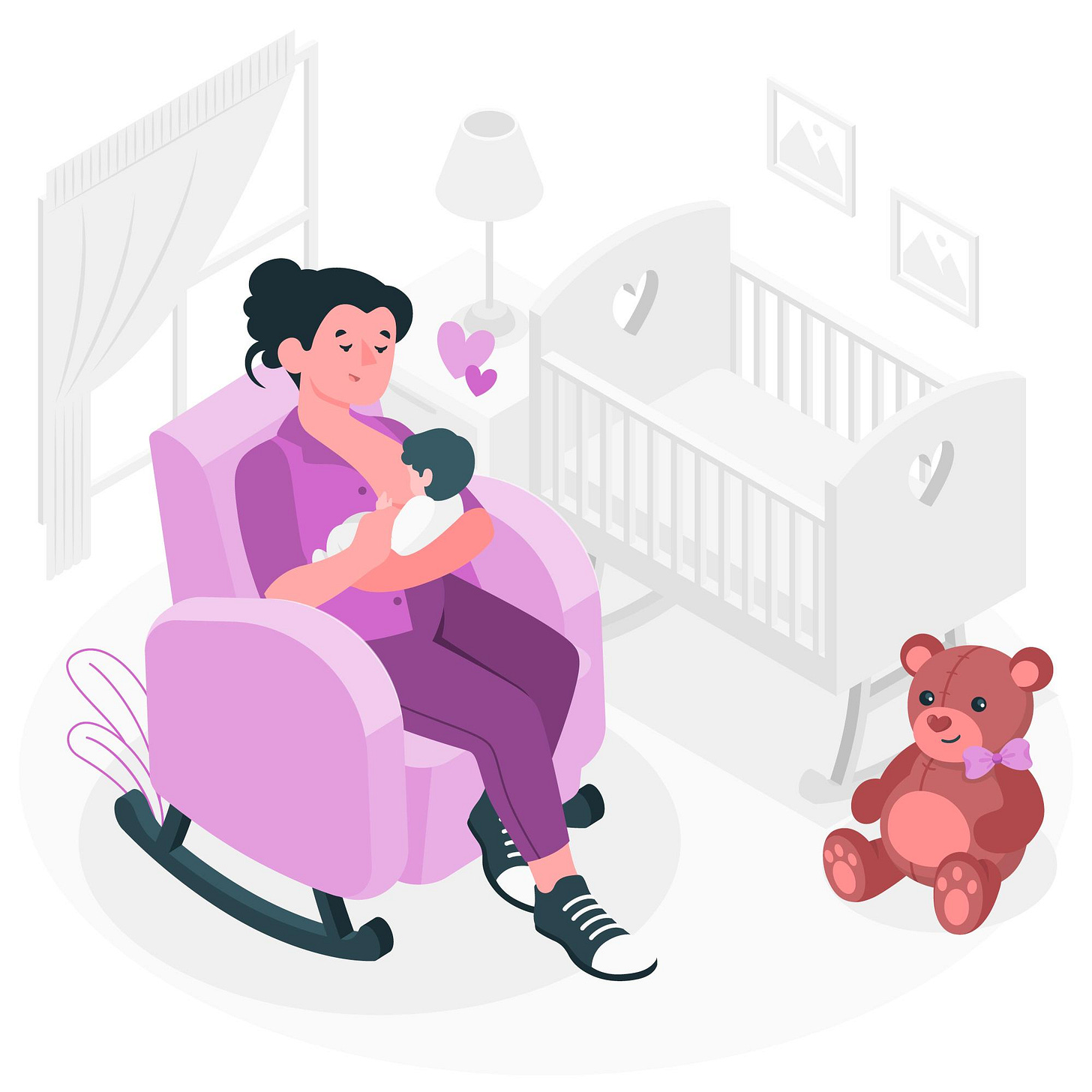Newborn sleep can feel like a puzzle with too many missing pieces. You’re overwhelmed, exhausted, and unsure whether what you’re doing is right. To simplify this journey, pediatric sleep consultant Rinie Gupta and pediatric nutritionist Sanchita Daswani hosted a deeply insightful episode answering the most common questions about newborn sleep.
Whether you're a first-time parent or navigating sleepless nights again, here are the expert-backed answers every parent needs to understand and manage their baby's sleep with confidence.
Introduction
According to Rinie, the confusion begins the moment parents bring their newborn home. Suddenly, they’re asking:
Where should my baby sleep?
How long should they sleep?
Why are they awake all night?
This episode aims to demystify newborn sleep and provide practical strategies that work in real-life parenting situations.
50. Top Questions about your Newborn’s Sleep Answered by a Pediatric Sleep Specialist
🤔 Struggling with sleepless nights and newborn chaos? You’re not alone!
The Worst Sleep Advice for New Parents
“Just go with the flow.”
Rinie says this is the worst advice. While flexibility is important, leaving sleep completely unstructured often leads to overtired, cranky babies with chaotic sleep cycles.
Rinie suggests having a basic structure instead of winging it entirely, to avoid confusion and exhaustion.
Can Newborns Have a Routine?
Yes, but not in the way adults do.
Rinie recommends starting with just two consistent elements:
A fixed wake-up time each morning (e.g., 8:30 AM ±15 minutes)
A fixed bedtime every night (e.g., 9:00–9:30 PM)
This gentle routine helps set the newborn’s circadian rhythm—the internal clock that eventually governs sleep and wake times.
How Much Should a Newborn Sleep?
Newborns typically sleep 14 to 18 hours in a 24-hour period.
This sleep happens in short bursts (1–3 hours), not long nighttime stretches. If a newborn is consistently sleeping less than 14 hours a day, it can negatively affect growth, feeding, and mood.
Why Do Newborn Babies Wake So Much at Night (And How to Handle It)
Newborns don’t produce their own melatonin (sleep hormone) until about 2–3 months of age. Their night wakings are normal.
Rinie suggests avoiding stimulating play when babies wake at night. Keep lights dim (preferably red light), avoid noise, and don’t move them out of the sleep environment.
This helps reinforce the concept of nighttime = sleep.
Where Should Newborns Sleep?
Newborns can either sleep:
In a crib/bassinet
Co-sleeping safely in the parents’ bed
Rinie recommends that for the first 6 months, babies sleep in the same room as their parents, as per SIDS (Sudden Infant Death Syndrome) prevention guidelines.
Be flexible. Even if you planned for crib sleeping, you may need to co-sleep or vice versa. The key is safety.
Can Babies Sleep in Another Room With a Nanny?
Yes, if done safely.
Rinie recommends:
Never let a nanny bed-share with the baby.
Baby should sleep in a crib, and the caregiver in a separate bed.
Ensure the nanny is well-rested during the day so they can be alert at night.
Real tragedies have occurred when caregivers fell asleep while holding babies on couches. Always prioritize safe sleep practices.
What should we keep in the Baby’s Crib?
At this point in the conversation, Sanchita raised an important and often overlooked concern:
"Yeah, that’s so important, and thank you for bringing that out for all the parents who are listening. You know, when you kept saying cribs, I have to bring this up for a second because I know we've spoken about this. Can you please reinforce to parents that there should not be anything in the crib besides the baby? As a new parent, you get excited, right? You're preparing the baby's room, adding all these fancy things—pillows, bolsters, blankets. But what’s actually safe?"
And Rinie answered firmly:
“Nothing. Absolutely nothing except the mattress, a fitted sheet, and your baby on it.”
Many new parents are influenced by picture-perfect Instagram nursery setups—cribs adorned with pillows, stuffed animals, wool bumpers, and designer sleep loungers like DockATot or "Sleepy Clouds". But as Rinie emphasized, none of these are safe.
Rinie warns: These accessories pose serious suffocation risks, especially as babies begin to move but are not yet strong enough to reposition themselves.
The danger peaks between 2 to 4 months, when the risk of SUID (Sudden Unexpected Infant Death) is highest. Babies might turn into a soft object and lack the motor skills to roll away, leading to tragedy in what seemed like a cozy, harmless crib.
Should Babies Nap in the Dark or Light?
To help babies distinguish day from night, Rinie recommends:
Day naps: In a well-lit area with normal household sounds.
Night sleep: In a dark, quiet room with minimal stimulation.
This contrast helps develop their internal clock over the first few months.
Should You Use White Noise?
Yes, white noise can be very effective for newborns.
Rinie recommends:
Keeping the machine 5–6 feet away from the crib.
Use a volume between 50–60 decibels.
Avoid placing it inside or directly on the crib.
White noise mimics womb sounds and can:
Help babies fall asleep faster
Reduce disturbances from external noises
When to Stop Using White Noise
There’s no specific age to stop.
Rinie suggests continuing white noise as long as it helps. Some children outgrow it naturally, while others (even adults!) find it helps them sleep better.
Impact of a Baby's Temperament on Sleep
Not all babies react to noise the same way.
Easy-going babies may sleep through vacuuming.
Spirited babies can wake from minor sounds.
Rinie recommends observing your baby’s individual temperament and adjusting the sleep environment accordingly. There's no one-size-fits-all.
Are Feeding and Rocking to Sleep Bad Habits?
One of the most common concerns among new parents is whether they’re creating “bad habits” by feeding or rocking their newborns to sleep.
But according to pediatric sleep consultant Rinie Gupta, this fear is mostly unnecessary, especially in the newborn stage. Newborns have immature sleep cycles and a strong need for physical closeness. In fact, holding, nursing, and rocking help mimic the womb environment they just left and soothe their nervous systems.
Rinie explains that for most families (around 70%), feeding or rocking to sleep doesn’t lead to long-term problems. Only about 30% may eventually find it challenging if their baby becomes heavily dependent on these methods to fall back asleep every time they wake.
So instead of labeling these practices as "bad," think of them as temporary tools. If you’re getting rest and your baby is thriving, there’s no urgent need to change anything.
Should You Use a Jhula to Make a Baby Sleep?
This is where Rinie draws a clear line. While feeding and rocking are fine, jhulas (traditional cloth swings) come with serious safety concerns.
Rinie strongly advises against using jhulas for prolonged or unsupervised sleep.
Here’s why:
Most jhulas have a curved design that causes a baby’s head to flop forward, risking positional asphyxiation (blocked airway).
Once babies start rolling, they can fall out or get their faces pressed against the fabric, posing a suffocation hazard.
Jhulas are often improvised (tied from sarees or cloth) without tested safety standards.
She recommends using a jhula only for brief soothing if needed, and transferring the baby to a flat, firm surface like a crib once they are calm.
Best Method to Get your Newborn Baby to Sleep
If you’d like alternatives or want to gradually reduce reliance on feeding or rocking, Rinie recommends trying the “5 S’s” by Dr. Harvey Karp, a proven method for calming and settling newborns:
Swaddle – Wrap them snugly to reduce the startle reflex.
Side/Stomach Position – Hold your baby on their side or stomach only while soothing, not during sleep.
Shush – Or use a white noise machine to mimic womb sounds.
Swing – Small, fast rocking motions (not large, jerky ones).
Suck – Let baby suck on a pacifier, bottle, or breast for comfort.
These techniques replicate the secure, rhythmic sensations of the womb and can help your baby sleep better without relying solely on feeding or rocking.
Is Swaddling Safe for Newborns?
Yes, if used correctly.
Swaddling reduces the startle reflex, helping babies sleep longer and better.
Rinie suggests:
Swaddle during naps and nighttime
Avoid swaddling if co-sleeping (it limits arm movement, increasing suffocation risk)
Use a sleep sack instead when bed-sharing
Swaddling mimics the womb and helps babies feel secure.
When to Stop Swaddling
As soon as your baby shows signs of rolling, which is usually around 8–12 weeks.
Rinie recommends either:
Gradual transition: one arm out, then both, then switch to a sleep sack
Cold turkey if preferred
Delaying this transition can become unsafe. Some babies become reliant on swaddles, but breaking the habit is possible with patience.
Final Words & How to Work With Rinie
There’s no perfect way to handle newborn sleep, but with awareness, adaptability, and safety, it becomes much easier.
Rinie recommends reaching out for personalized support if sleep challenges persist. She offers 1-on-1 consultations via Instagram DMs and regularly works with parents to build sleep plans tailored to their needs.
Conclusion
Newborn sleep isn’t easy, but it’s not impossible either.
By understanding your baby’s needs, setting realistic routines, and prioritizing safe sleep environments, you’re already doing a great job. And remember: there’s no shame in asking for help.
For more newborn sleep guidance, you can follow Rinie Gupta on Instagram or reach out directly via DM for one-on-one consultations.
50. Top Questions about your Newborn’s Sleep Answered by a Pediatric Sleep Specialist
🤔 Struggling with sleepless nights and newborn chaos? You’re not alone!






